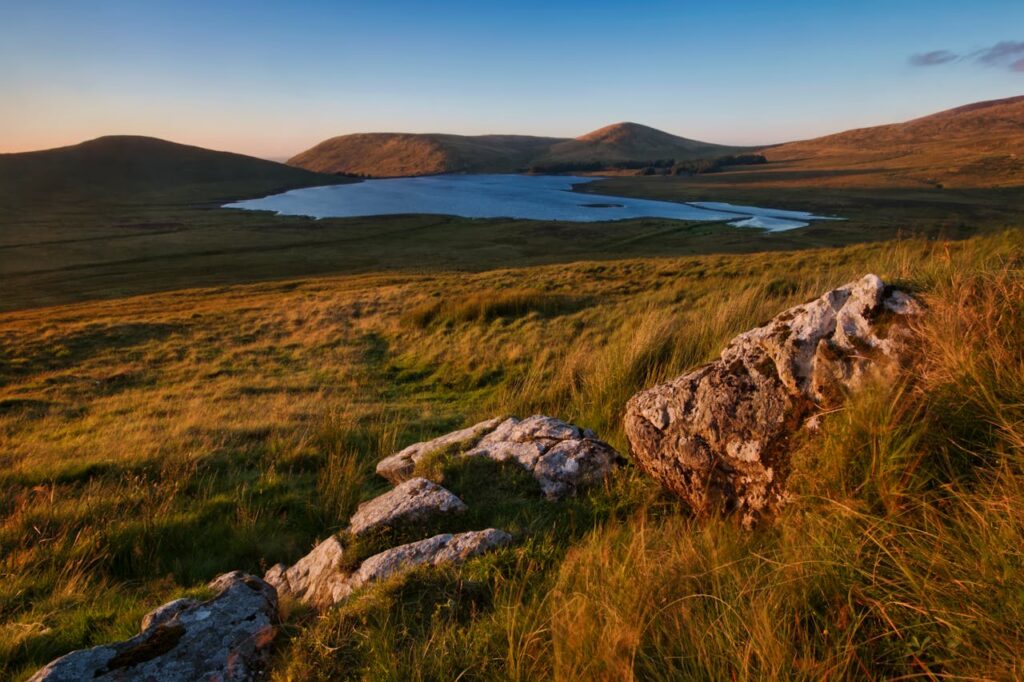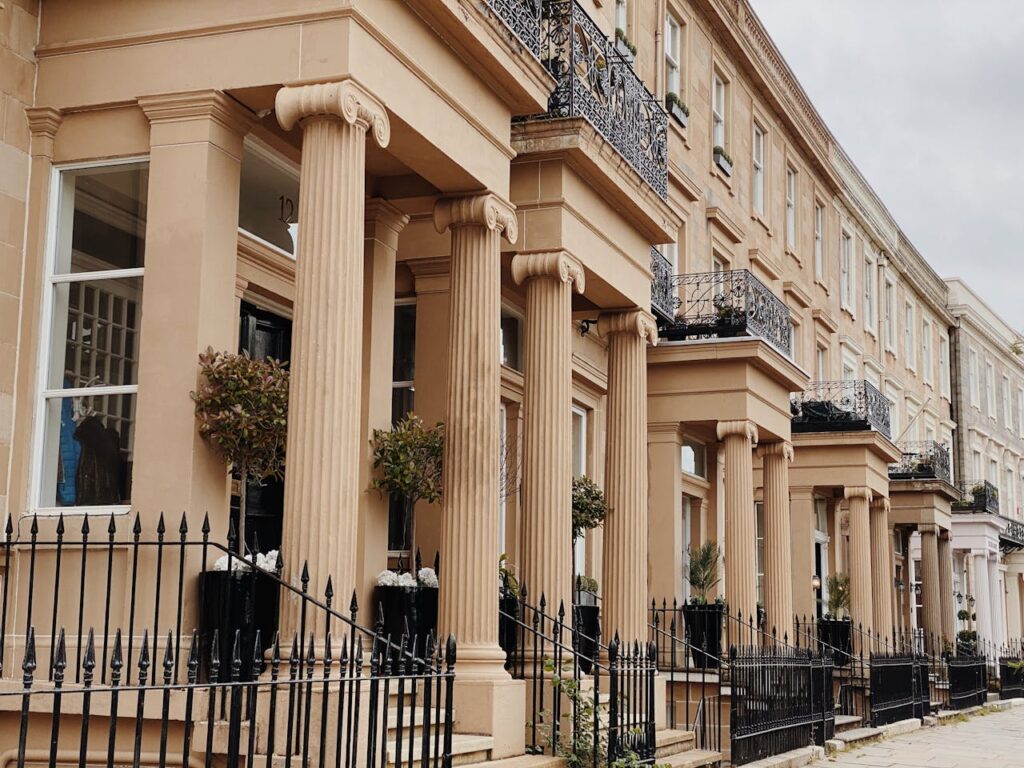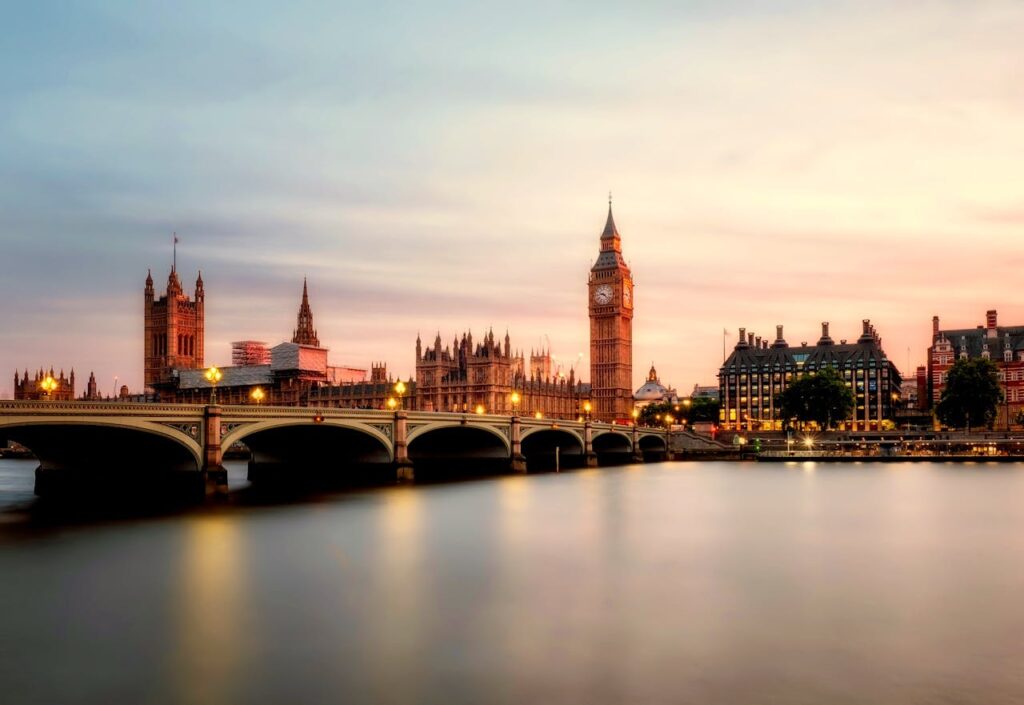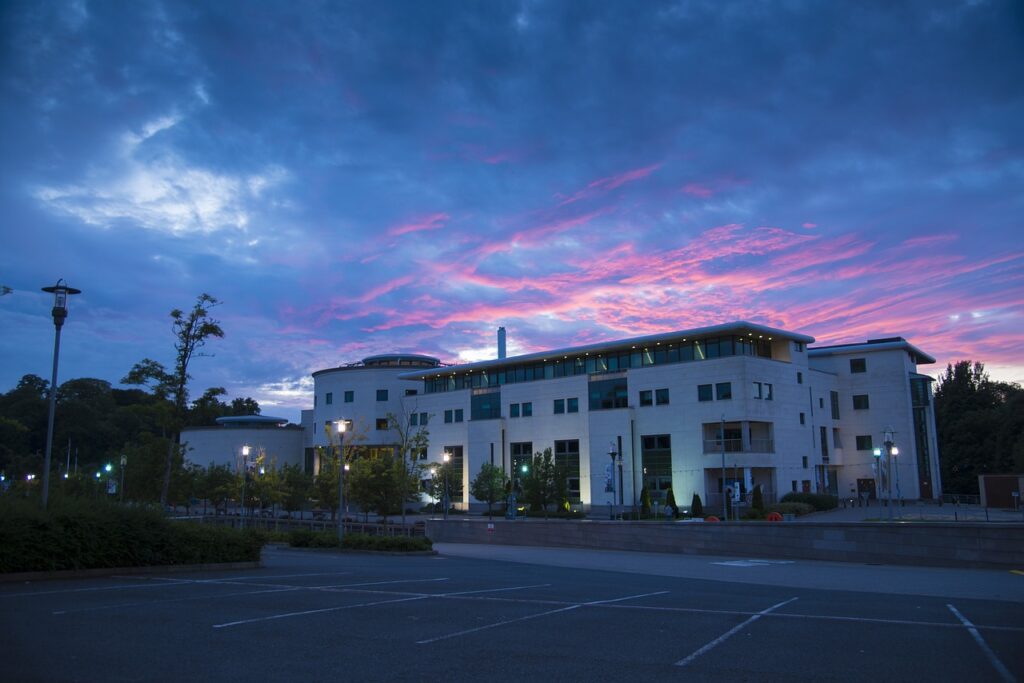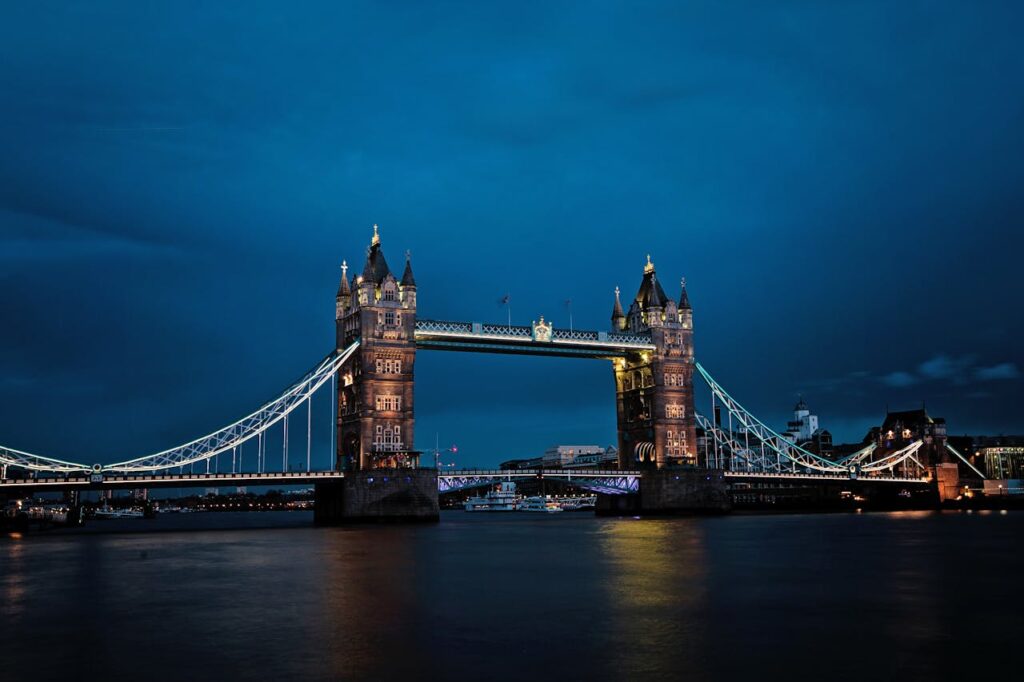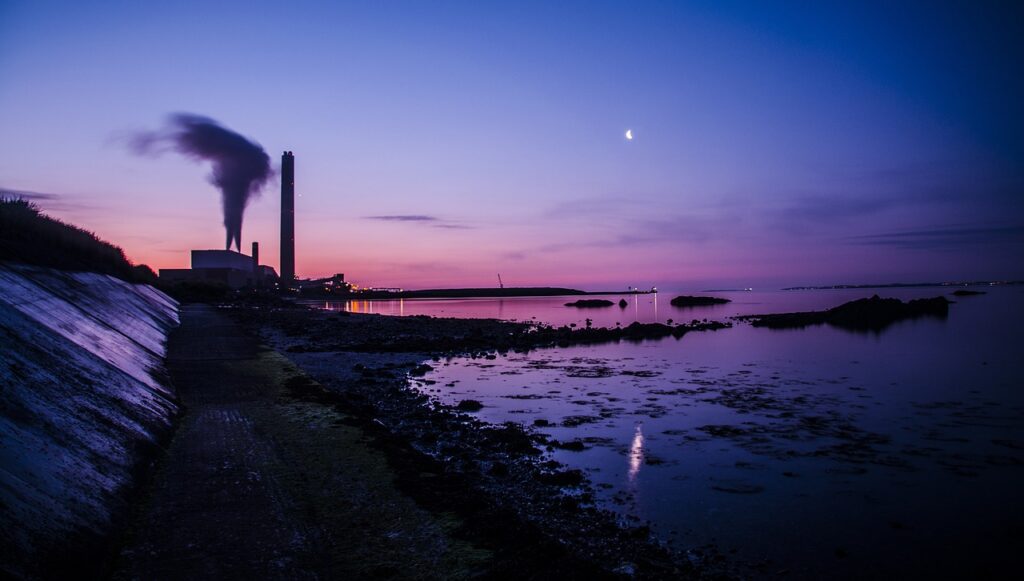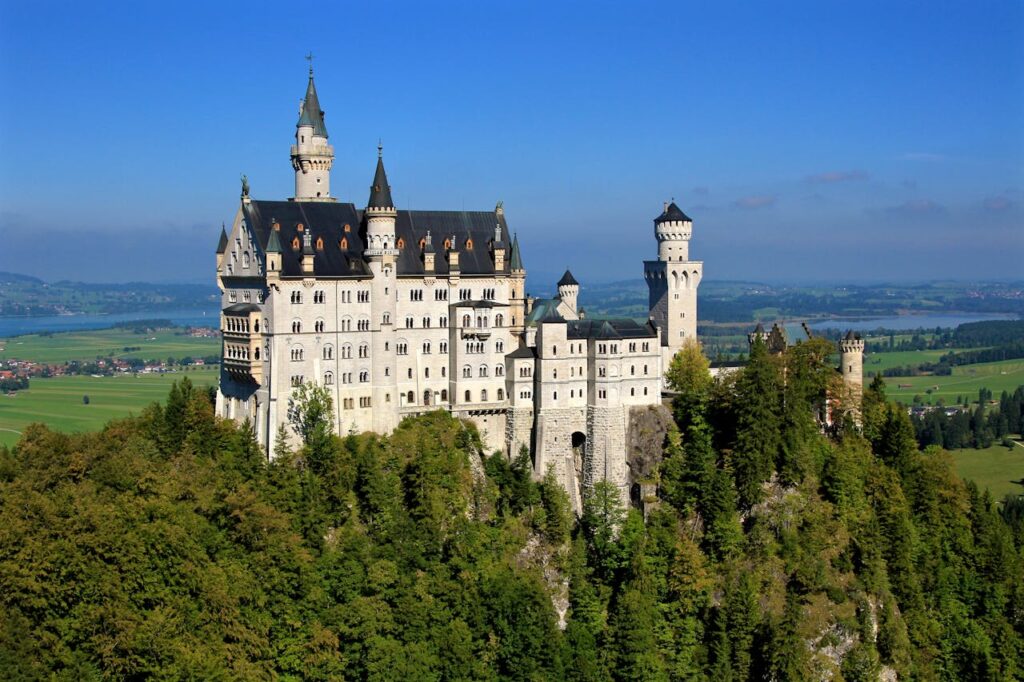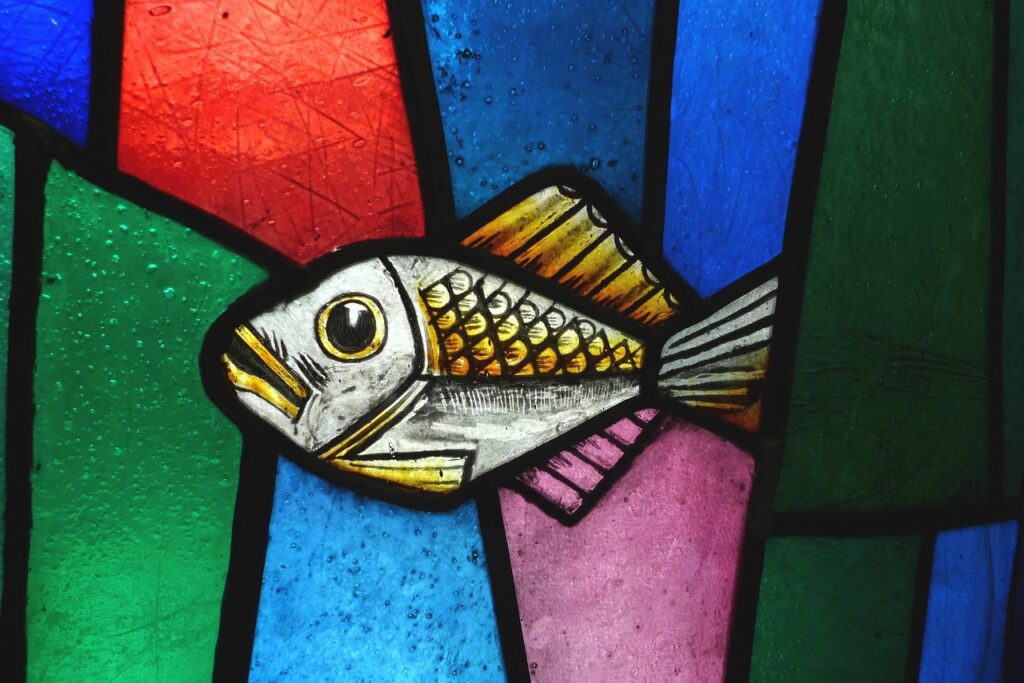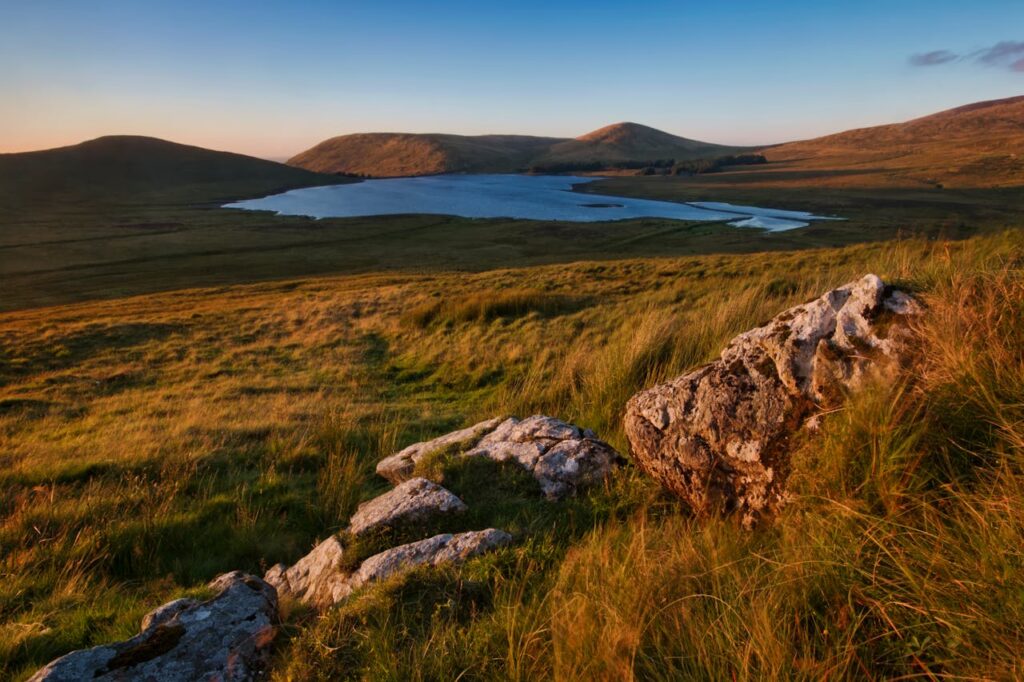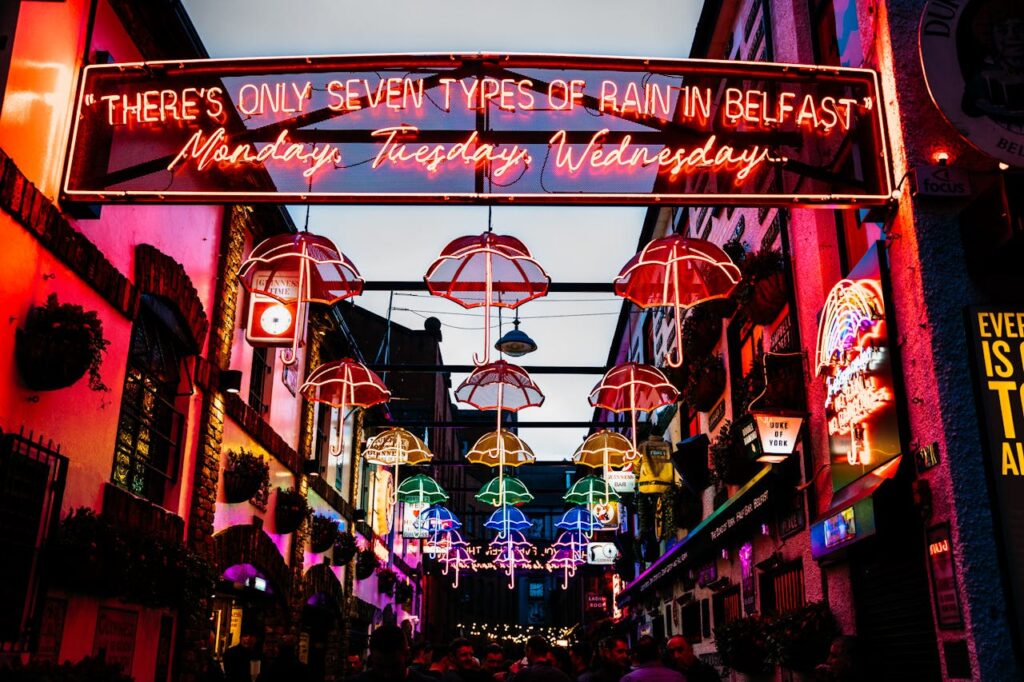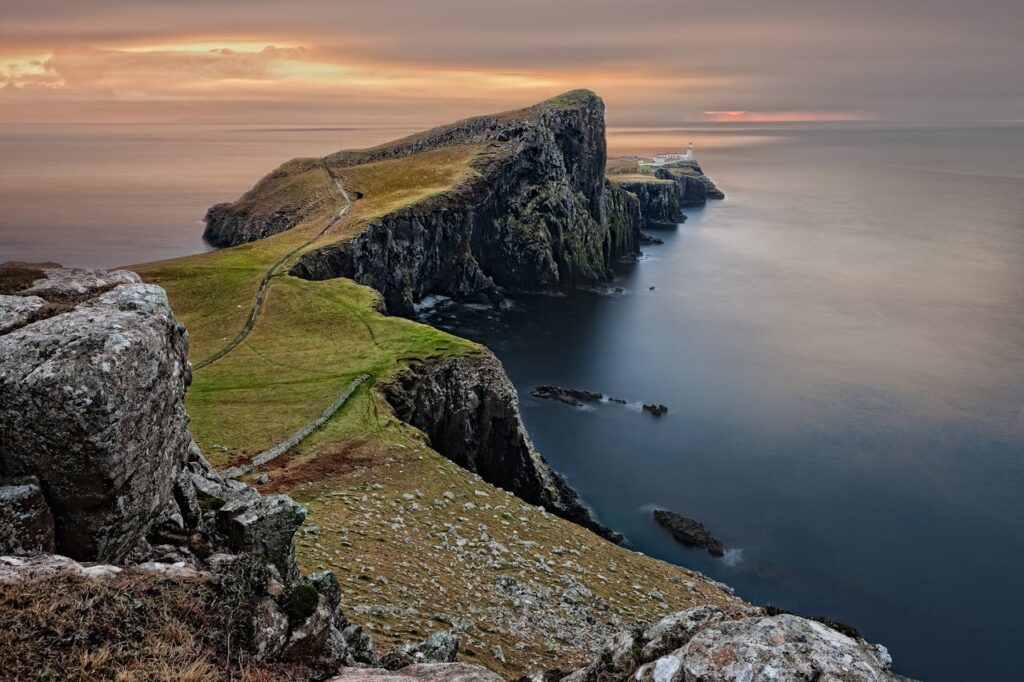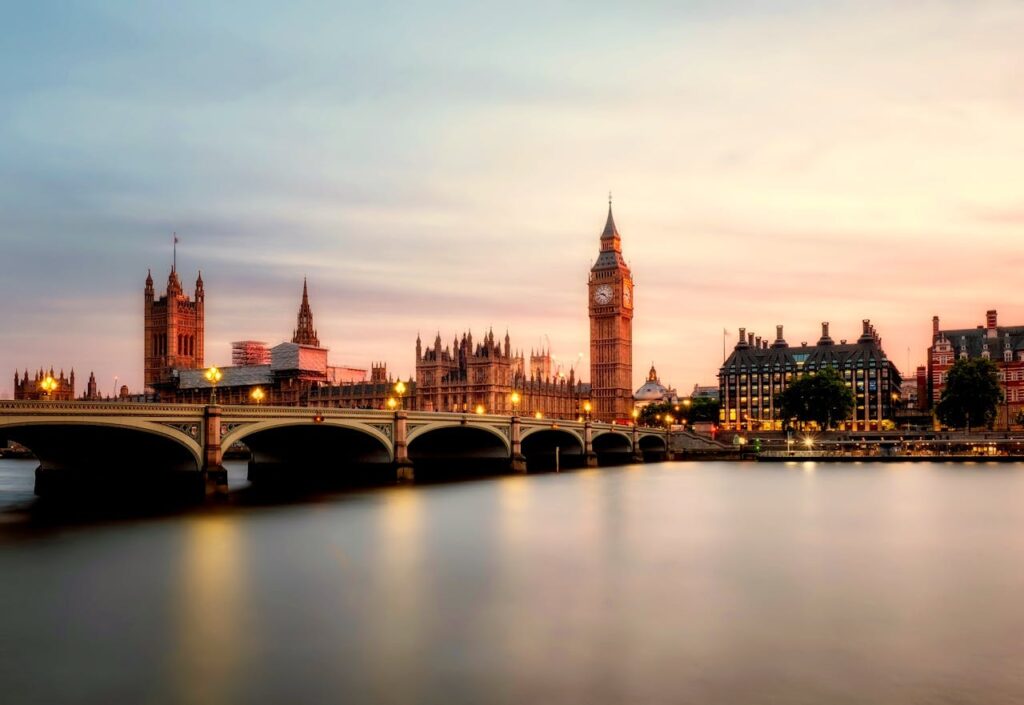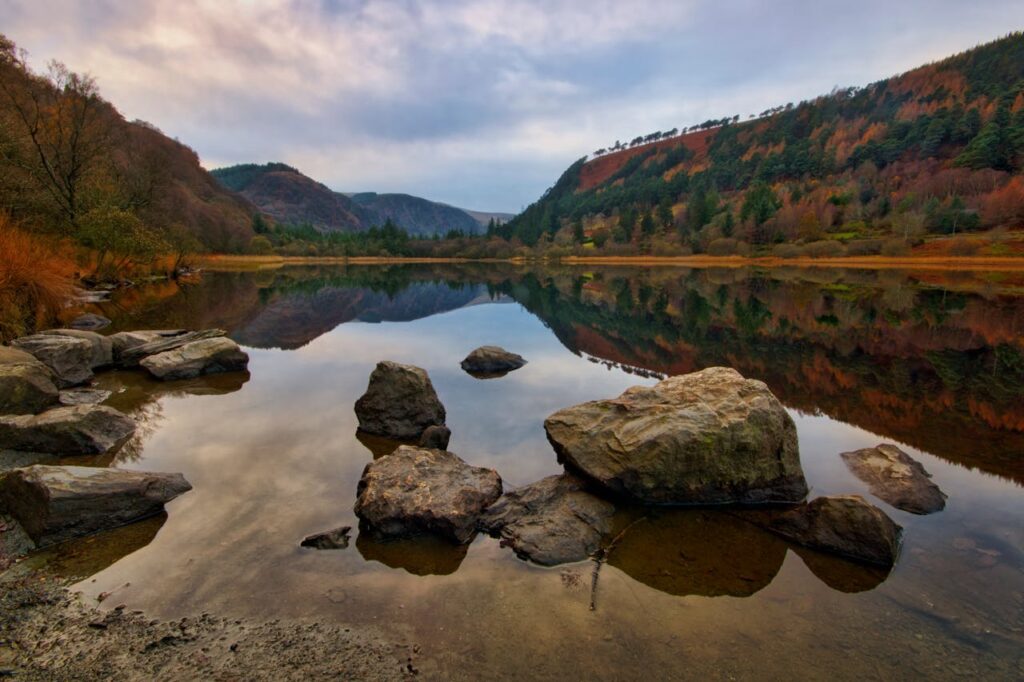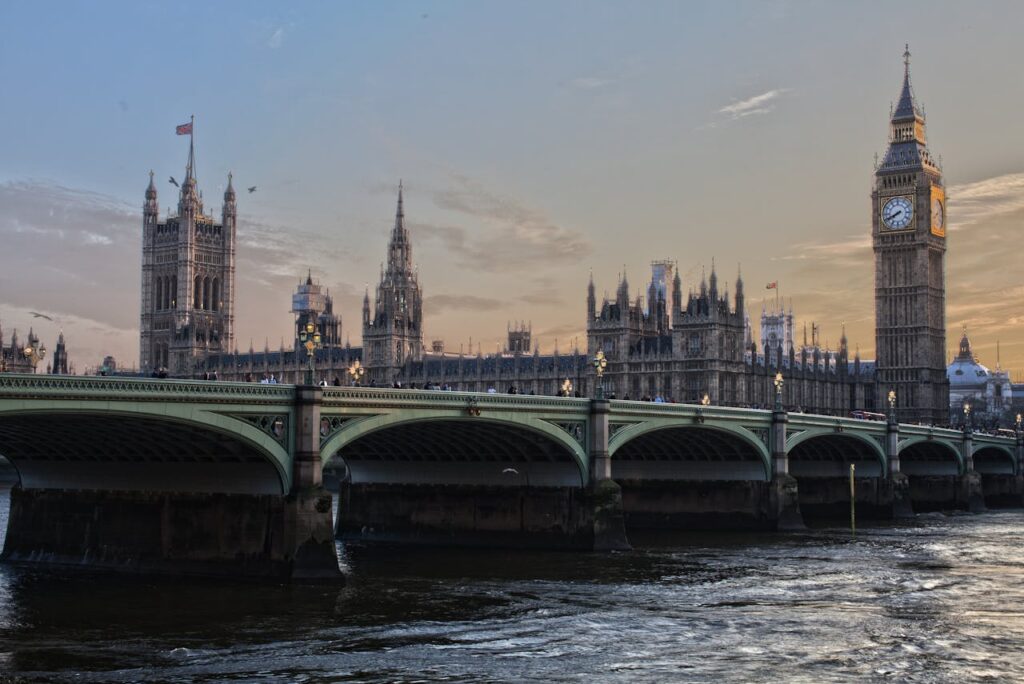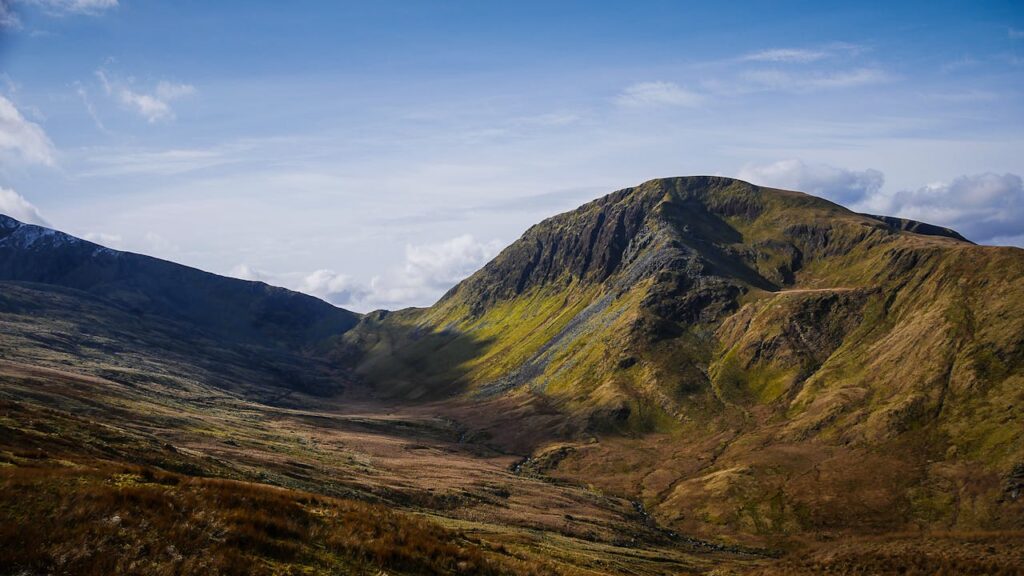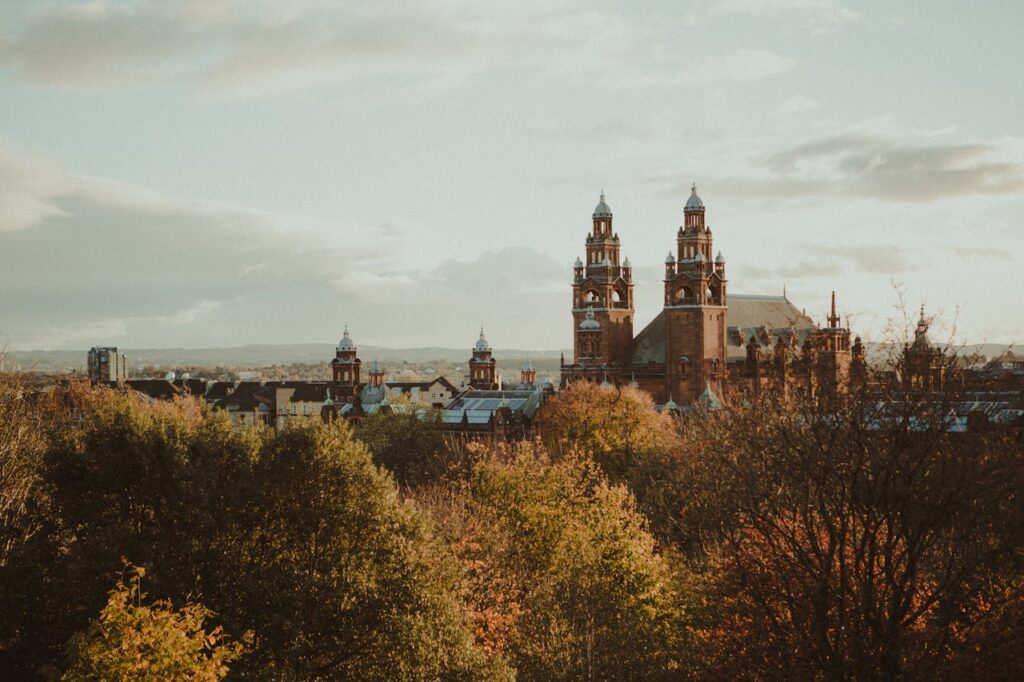Derry, also known as Londonderry, is a vibrant city in Northern Ireland, steeped in history and culture. Known for its well-preserved city walls, stunning architecture, and lively arts scene, Derry offers a variety of attractions for visitors. Here are some of the best places to visit in Derry, Northern Ireland:
Best Places to Visit
1. Derry City Walls
The Derry City Walls are one of the best-preserved city walls in Europe and offer a unique way to explore the city’s history. Built between 1613 and 1618, the walls are nearly 1.5 kilometers long and provide panoramic views of the city and surrounding areas. Visitors can walk along the walls, which feature several gates, bastions, and cannons, and learn about the city’s turbulent past.
- Key Attractions: Historic walls, city views.
- Activities: Walking, sightseeing, photography.
- Location: City center, Derry, Northern Ireland.
2. Guildhall
The Guildhall is an iconic building in Derry, known for its stunning neo-Gothic architecture and beautiful stained glass windows. Built in 1890, the Guildhall serves as a cultural and civic center. Visitors can explore the building’s interior, which houses exhibitions on the city’s history and local government. The Guildhall is also a popular venue for concerts and events.
- Key Attractions: Neo-Gothic architecture, stained glass windows.
- Activities: Sightseeing, attending events.
- Location: Guildhall Square, Derry, Northern Ireland.
3. Museum of Free Derry
The Museum of Free Derry is a history museum that focuses on the events of the civil rights era in the 1960s and 1970s, particularly the Battle of the Bogside and Bloody Sunday. The museum offers an insightful look into the political and social history of the time, featuring photographs, videos, and personal accounts. It’s a powerful and educational experience for those interested in understanding Derry’s recent history.
- Key Attractions: Civil rights exhibits, historical artifacts.
- Activities: Museum visit, educational exploration.
- Location: Glenfada Park, Derry, Northern Ireland.
4. Tower Museum
The Tower Museum is located within the historic city walls and offers two permanent exhibitions: “The Story of Derry” and “An Armada Shipwreck – La Trinidad Valencera.” The museum provides a comprehensive overview of Derry’s history, from its early settlements to modern times. The Armada exhibition tells the story of the Spanish shipwreck off the coast of Donegal. The museum’s top floor offers a panoramic view of the city.
- Key Attractions: Historical exhibits, city views.
- Activities: Museum visit, historical exploration.
- Location: Union Hall Place, Derry, Northern Ireland.
5. Peace Bridge
The Peace Bridge is a modern pedestrian and cycle bridge that spans the River Foyle, connecting the city center to the Ebrington area. Opened in 2011, the bridge symbolizes the city’s commitment to peace and unity. It’s a beautiful structure, especially at night when it is illuminated. Visitors can enjoy a leisurely walk across the bridge, take in the scenic views, and explore the nearby Ebrington Square.
- Key Attractions: Modern bridge, scenic views.
- Activities: Walking, photography.
- Location: River Foyle, Derry, Northern Ireland.
6. St. Columb’s Cathedral
St. Columb’s Cathedral is a historic Anglican cathedral in Derry, dating back to 1633. It is one of the city’s most significant landmarks and a fine example of Planter’s Gothic architecture. The cathedral features beautiful stained glass windows, intricate woodwork, and a collection of historical artifacts. Visitors can explore the interior, learn about the cathedral’s history, and enjoy the peaceful churchyard.
- Key Attractions: Gothic architecture, historical artifacts.
- Activities: Sightseeing, reflection, photography.
- Location: London Street, Derry, Northern Ireland.
7. Foyle Valley Railway Museum
The Foyle Valley Railway Museum is dedicated to the history of the railways in the northwest of Ireland. The museum features a collection of railway memorabilia, including locomotives, carriages, and photographs. Visitors can learn about the region’s railway heritage and the role of trains in the development of the area. The museum also offers model railway displays and interactive exhibits.
- Key Attractions: Railway artifacts, locomotives.
- Activities: Museum visit, educational exploration.
- Location: Victoria Road, Derry, Northern Ireland.
8. Ebrington Square
Ebrington Square is a public space located on the former site of a military barracks. It has been transformed into a vibrant cultural and event venue. The square hosts various events, concerts, and festivals throughout the year. It also features art installations, cafes, and restaurants. The square is accessible via the Peace Bridge and offers a great place to relax and enjoy the city’s cultural offerings.
- Key Attractions: Public space, events.
- Activities: Attending events, dining, leisure.
- Location: Ebrington, Derry, Northern Ireland.
9. The Bogside Murals
The Bogside Murals, also known as the People’s Gallery, are a series of large-scale murals depicting key events and figures from Derry’s recent history. Located in the Bogside neighborhood, the murals were created by the Bogside Artists and reflect themes of civil rights, peace, and resilience. A walking tour of the murals provides insight into the city’s history and the Troubles.
- Key Attractions: Historical murals, street art.
- Activities: Walking tour, photography.
- Location: Bogside, Derry, Northern Ireland.
10. Brooke Park
Brooke Park is a historic public park located near the city center. The park features beautifully landscaped gardens, a Victorian bandstand, and a café. It’s a popular spot for leisurely walks, picnics, and enjoying the outdoors. The park also offers stunning views of the city and the surrounding area. It’s an ideal place to relax and unwind.
- Key Attractions: Landscaped gardens, Victorian bandstand.
- Activities: Walking, picnicking, relaxation.
- Location: Rosemount Avenue, Derry, Northern Ireland.
Summary Table
| Place | Description | Key Attraction | Location |
|---|---|---|---|
| Derry City Walls | Historic walls surrounding the city | Walking path, city views | City center, Derry |
| Guildhall | Iconic building with neo-Gothic architecture | Stained glass windows, cultural events | Guildhall Square |
| Museum of Free Derry | Museum focusing on the civil rights era | Civil rights exhibits, historical artifacts | Glenfada Park |
| Tower Museum | Museum with exhibitions on Derry’s history and the Spanish Armada | Historical exhibits, city views | Union Hall Place |
| Peace Bridge | Modern pedestrian bridge over the River Foyle | Scenic views, modern design | River Foyle |
| St. Columb’s Cathedral | Historic Anglican cathedral | Gothic architecture, historical artifacts | London Street |
| Foyle Valley Railway Museum | Museum dedicated to the region’s railway heritage | Railway artifacts, locomotives | Victoria Road |
| Ebrington Square | Public space and cultural venue | Art installations, events | Ebrington |
| The Bogside Murals | Series of murals depicting key historical events | Historical murals, street art | Bogside |
| Brooke Park | Historic public park | Landscaped gardens, Victorian bandstand | Rosemount Avenue |
How to Reach Derry
By Air
The nearest airport to Derry is City of Derry Airport (LDY), located about 7 miles from the city center. The airport offers flights to several destinations in the UK. Alternatively, Belfast International Airport (BFS) and Belfast City Airport (BHD) are also options, with a wider range of international flights.
By Train
Derry is served by the Northern Ireland Railways network, with regular train services connecting the city to Belfast and other destinations in Northern Ireland. The train journey from Belfast to Derry takes approximately 2 hours.
By Bus
Derry is well-connected by bus services, with Translink and other operators providing routes to and from the city. The Ulsterbus service connects Derry to various towns and cities across Northern Ireland.
By Car
Derry is accessible by road via the A6 and A5 routes. The city is well-connected to other major cities in Northern Ireland and the Republic of Ireland. Public parking facilities are available in the city center.
Best Time to Visit Derry
The best time to visit Derry is during the spring and summer months, from April to September, when the weather is mild and pleasant. These months are ideal for exploring outdoor attractions, enjoying cultural events, and experiencing the city’s vibrant atmosphere. The autumn months also offer pleasant weather and fewer crowds.
Travel Tips
- Local Cuisine: Derry offers a variety of dining options, including traditional Irish cuisine and international dishes. Be sure to try local specialties such as Irish stew, soda bread, and seafood dishes.
- Cultural Etiquette: When visiting cultural and historical sites, respect local customs and traditions. Derry has a complex history, and it is important to be sensitive when discussing historical and political issues.
- Language: English is the primary language spoken in Derry. Visitors will have no trouble communicating in English.
- **Currency
**: The official currency in Northern Ireland is the British Pound (GBP). Credit and debit cards are widely accepted, but it is advisable to carry some cash for small transactions.
Itinerary Suggestions
One-Day Trip
- Morning: Start your day with a walk along the Derry City Walls to explore the historic fortifications and enjoy views of the city. Then, visit the Tower Museum to learn about Derry’s history and the Spanish Armada.
- Afternoon: Have lunch at a local café and visit the Museum of Free Derry for an in-depth look at the city’s recent history. Afterward, explore the Guildhall and its beautiful stained glass windows.
- Evening: Conclude your day with a stroll across the Peace Bridge to Ebrington Square, where you can enjoy the views and perhaps attend an event.
Weekend Getaway
- Day 1: Begin with visits to the Derry City Walls, the Tower Museum, and the Guildhall. In the afternoon, explore the Museum of Free Derry and the Bogside Murals. In the evening, dine at a local restaurant and enjoy a walk across the Peace Bridge.
- Day 2: Start with a morning visit to St. Columb’s Cathedral to explore its historic interior. Then, head to the Foyle Valley Railway Museum to learn about the region’s railway heritage. In the afternoon, relax in Brooke Park or visit the cultural hub of Ebrington Square. Conclude your trip with a leisurely evening in the city center.
Derry’s blend of historical sites, cultural attractions, and natural beauty makes it a captivating destination in Northern Ireland. Whether you’re exploring the city’s rich heritage, enjoying outdoor activities, or simply soaking in the vibrant atmosphere, Derry offers a unique and memorable experience for every traveler.

